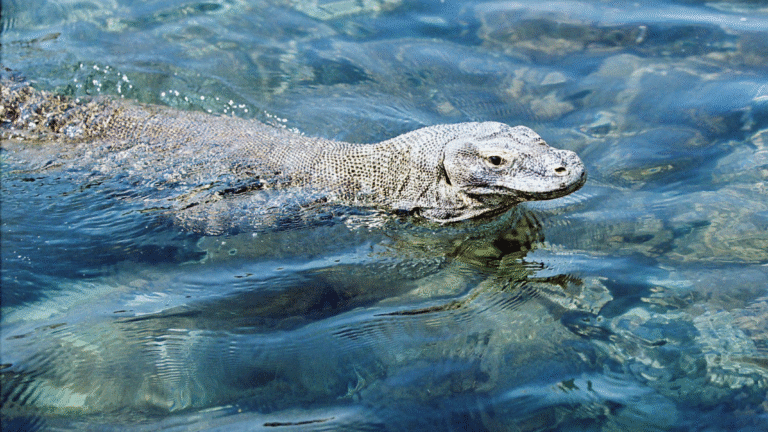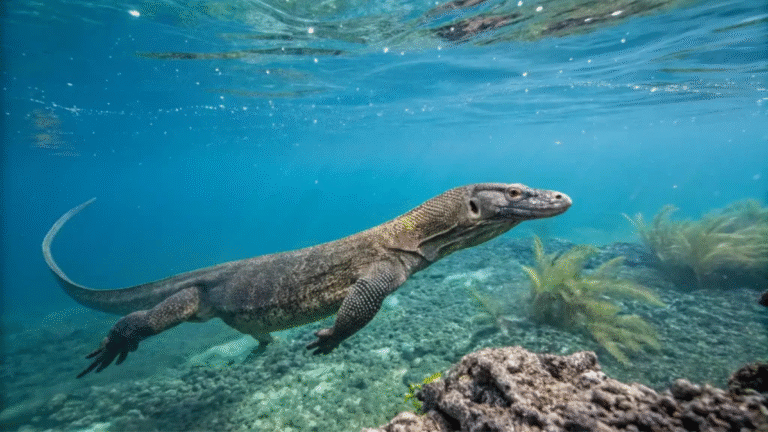Have you ever imagined a Komodo dragon climbing a tree with its massive body? Or did you know that, surprisingly, Komodo dragons are skilled swimmers? Even more shocking they’re cannibalistic creatures that eat their own eggs, and adult Komodos have been known to prey on younger ones. In this article, I’m going to reveal some truly mind-blowing facts about Komodo dragons that might leave you stunned and questioning, “Is that even real?” so much so that you might just want to book a trip to Komodo Island in Indonesia to see it for yourself.
Let’s dive into 10 incredible and somewhat shocking facts about Komodo dragons you probably didn’t know.

1. Komodo Dragons Can Climb Trees
Although adults may appear too heavy and grounded, young Komodo dragons are adept climbers. In their early stages of life, these reptiles often spend their time up in the trees a survival strategy that protects them from becoming prey to larger Komodos.
Once Komodo dragons grow heavier, usually around the age of 4 or 5, climbing becomes nearly impossible due to their size and weight. Still, the climbing behavior of juveniles is a vital part of their development and a clear indication of their early intelligence and adaptability.
Tree climbing also allows young dragons to access insects, birds, and eggs expanding their diet while avoiding the threat of larger, cannibalistic adults. This behavior showcases just how much Komodo dragons adapt to their dangerous environment, even from a young age.
2. They Are Surprisingly Good Swimmers
Despite their bulky appearance and land-dwelling nature, Komodo dragons are highly skilled swimmers. In fact, they are capable of swimming several kilometers between islands — something you might not expect from a creature that looks more suited for deserts than oceans.
Komodo dragons often swim to search for food, mates, or new territory. Their muscular tails function like rudders, propelling them smoothly through the water. Some sightings report Komodos swimming over 1 kilometer offshore, and even up to 3 kilometers across stretches of open sea.
This swimming ability is essential for survival, especially in the rugged archipelago of eastern Indonesia where food and mates may be spread across several islands.
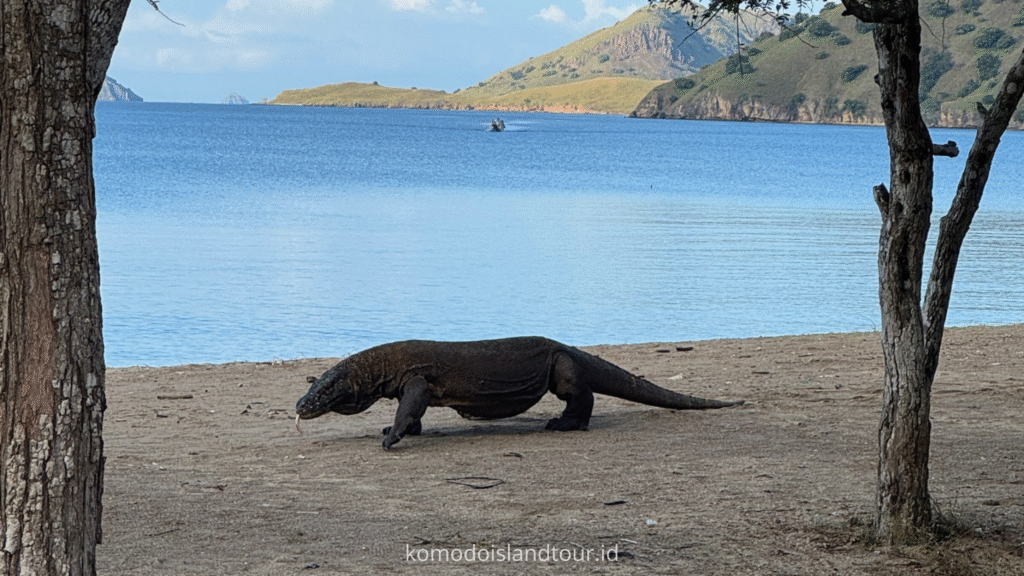
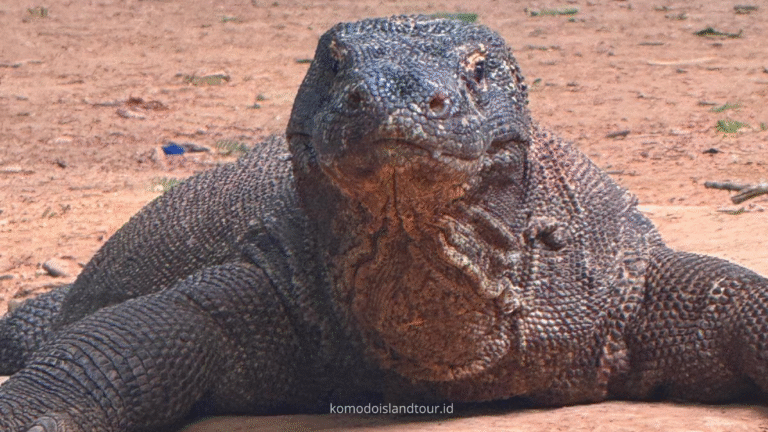
3. Komodo Dragons Are Cannibalistic
One of the darker truths about Komodo dragons is their cannibalistic behavior. Adult Komodos will often prey on smaller members of their own species, including hatchlings and juveniles. Studies estimate that about 10% of a adult Komodo dragon’s diet consists of other young Komodos.
This behavior plays a large role in the survival strategy of young dragons. As a result, juveniles instinctively live in trees and roll around in feces to mask their scent all in a desperate attempt to avoid being detected by adults. In some observed cases, Komodo dragons have even been known to dig up and consume their own eggs
In the brutal world of Komodo dragons, the risk of being eaten by your own kind is very real.


4. They Can Reproduce Asexually
One of the most fascinating biological feats of the Komodo dragon is its ability to reproduce asexually through a process known as parthenogenesis. In the absence of a male, a female Komodo can lay viable eggs that hatch into male offspring.
This rare reproductive adaptation ensures the continuation of the species in isolated conditions — especially useful in their limited island habitats, where finding a mate might be difficult.
However, offspring produced through parthenogenesis are always male due to the nature of Komodo dragon sex chromosomes. While this limits genetic diversity, it provides a lifeline for population sustainability in certain scenarios, especially in zoos and conservation programs.
5. Komodo Dragons Have Been Given as Diplomatic Gifts
Komodo dragons have not only captured the imagination of scientists and wildlife lovers but also world leaders. In an act of diplomacy and national pride, Indonesia once gifted Komodo dragons to the President of the United States.
In 1990, President George H. W. Bush received a Komodo dragon named “Naga” from the Indonesian government. Though not kept at the White House, Naga was housed at the Cincinnati Zoo, where he lived for several years.
This unique diplomatic gesture illustrates the symbolic status of Komodo dragons in Indonesia a creature so rare and powerful it has become a tool of international goodwill.


6. Komodo Dragons Are Found Only in Indonesia
Komodo dragons are endemic to Indonesia, meaning they are found nowhere else in the world. Their habitat is restricted to a small cluster of islands: Komodo, Rinca, Flores, Gili Motang, and Padar, all located in the Lesser Sunda chain in eastern Indonesia.
These rugged, dry islands are characterized by savannahs, scrublands, and hills perfect conditions for these cold blooded predators. Komodo National Park, established in 1980, is now a UNESCO World Heritage Site and the primary conservation area for this vulnerable species.
Because of their limited range, Komodo dragons are highly susceptible to habitat destruction, natural disasters, and climate change, which is why conservation efforts are crucial.
7. Komodo Dragons Originated in Australia
Contrary to what many assume, Komodo dragons are not native to Indonesia in the evolutionary sense. Fossil records show that their ancestors likely originated in Australia more than 3.8 million years ago.
These early ancestors were part of a larger genus of giant monitor lizards that migrated westward through Southeast Asia. Over time, populations became isolated on the islands of Indonesia, where they evolved into the Komodo dragon we know today.
Interestingly, similar species existed in mainland Australia until about 50,000 years ago. The arrival of humans in Australia, alongside climate shifts, may have driven those populations to extinction, leaving the Indonesian populations as the last survivors.

8. Their Tails Are Longer Than Their Bodies
A Komodo dragon’s tail isn’t just for show it’s a powerful weapon. Often longer than the dragon’s own body, the tail plays a critical role in balance, swimming, and defense.
In the wild, Komodos use their tails to trip prey or even knock down opponents. When threatened, a Komodo dragon may lash its tail with incredible force, capable of stunning or injuring predators or competitors.
The tail’s muscular structure also aids in swimming and helps maintain balance during rapid movements. In short, it’s an all in one tool: whip, paddle, and counterbalance.
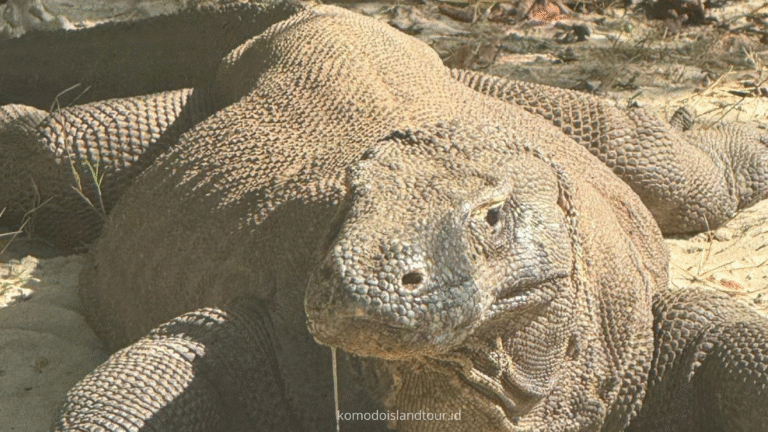
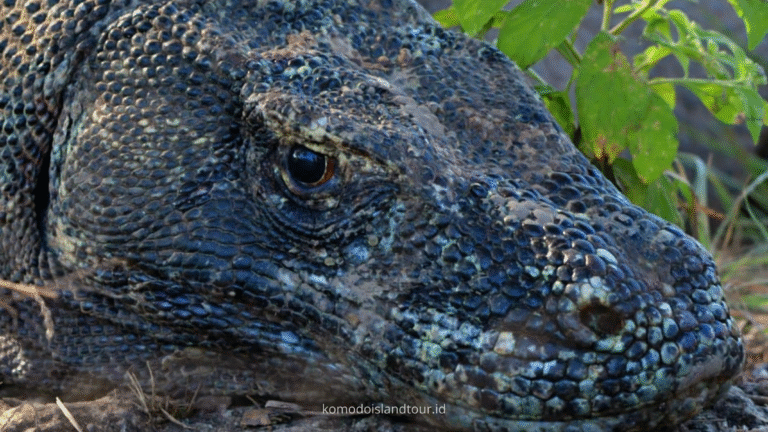
9. They Possess a Venomous Bite
For decades, scientists believed that the secret behind the Komodo dragon’s deadly bite was the bacteria that thrived in its mouth. As scavengers that often feed on rotting carcasses, it was assumed that their mouths were teeming with dangerous microbes, which would infect and eventually kill any wounded prey.
However, this long-standing myth was corrected in 2009 by Dr. Bryan Fry, a venom researcher at the University of Melbourne. His groundbreaking study revealed that Komodo dragons are, in fact, venomous one of the very few venomous lizards on the planet.
Unlike snakes that inject venom directly through hollow fangs, Komodo dragons release venom through glands located in their lower jaws. When they bite, they inflict deep wounds, and the venom seeps into the bloodstream of their prey. The venom contains toxins that reduce blood pressure, cause massive bleeding, prevent clotting, and induce shock effectively disabling the victim within minutes.
What’s even more remarkable is the Komodo’s patient hunting technique. Often, the wounded animal may escape the initial attack, but the Komodo dragon doesn’t panic. Instead, it follows the injured prey using its keen sense of smell capable of detecting blood and decay from several kilometers away — and trails it until the venom takes its toll. Once the animal collapses from blood loss and toxicity, the Komodo moves in for the final kill.
This discovery has not only redefined how we understand Komodo dragons but also underscored their role as highly evolved predators, capable of taking down animals much larger than themselves with precision and biological efficiency.
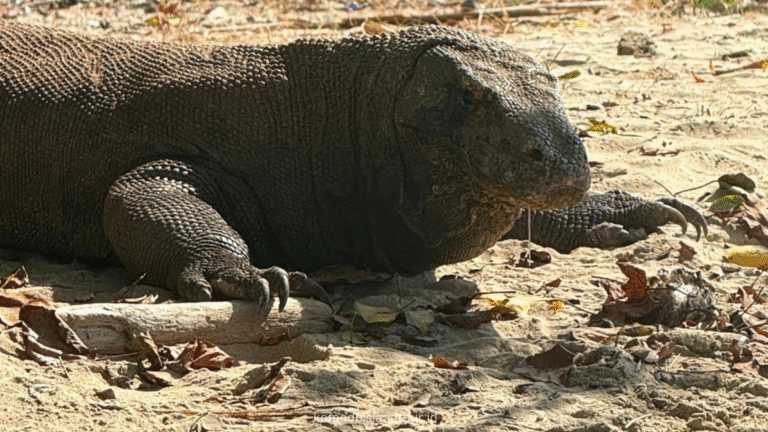

10. Despite the Name, Komodo Dragons Aren’t Dragons
The name “Komodo dragon” certainly evokes images of mythological beasts and with their giant size, fearsome teeth, and reptilian appearance, it’s easy to see why. However, Komodo dragons are not dragons at all they are lizards.
Specifically, they are a species of monitor lizard, related to other members of the Varanus genus. While they may not breathe fire, Komodo dragons are still formidable predators, using stealth, venom, and brute strength to dominate their environment.
Their dragon-like nickname comes more from their appearance and behavior than any scientific classification. It’s a great reminder that reality can sometimes be just as fascinating as myth and often, far more dangerous.
Final Thoughts
Komodo dragons are truly one of the most unique and awe-inspiring species on the planet. From their venomous bites and cannibalistic tendencies to their ancient Australian origins and ability to reproduce without a mate, these creatures challenge everything we thought we knew about reptiles.
They are a vital part of Indonesia’s natural heritage, a marvel of evolution, and a subject of ongoing scientific discovery. As we continue to learn more about Komodo dragons, it becomes clear that their story is far from over — and the more we uncover, the more remarkable they seem.
If you ever get the chance to visit Komodo National Park and see one of these giants in person, you’ll witness a living relic of Earth’s prehistoric past — a reminder of nature’s complexity, power, and endless capacity to surprise us.
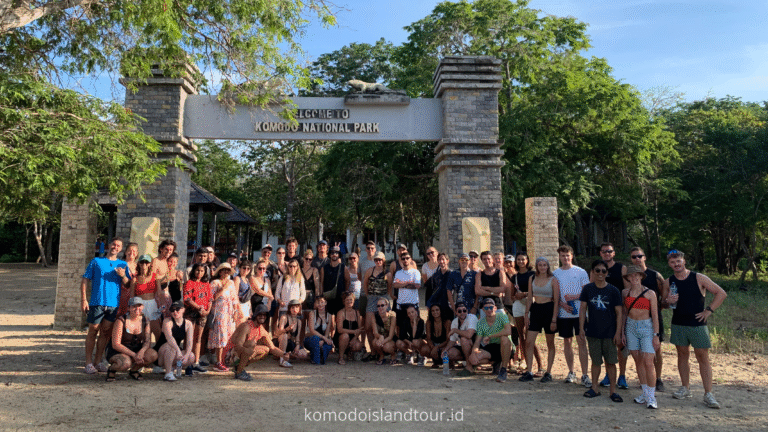
Those are some of the most fascinating and surprising facts you need to know about Komodo dragons. Which one shocked you the most? Personally, I was most stunned by their cannibalistic behavior. It’s heartbreaking especially knowing that they’re an endangered species. But that’s the reality of the wild: the raw, untamed way of life that Komodo dragons embody.
And perhaps, there’s something we can learn from them about evolution, survival, and resilience. Maybe I should write a special article just about that.
As nature lovers, it’s our responsibility to help protect the Komodo dragon so that future generations can still witness these living dinosaurs. Although they look intimidating, Komodo dragons are actually used to living near humans, and you’ll be completely safe when you’re with a Komodo Ranger local guides who know every detail of Komodo Island and wield a “magic stick” in their hand to control the dragons when needed.
So, are you ready to meet a Komodo dragon face to face?
To truly experience the wonder of this ancient creature, join an unforgettable journey with Komodo Island Tour Indonesia. Our exclusive Komodo Dragon Tour offers a range of options to suit every type of traveler whether you’re looking for a private escape, a shared group experience, or a thrilling full-day adventure. Ready for a thrilling and passionate adventure? Book your spot now!

